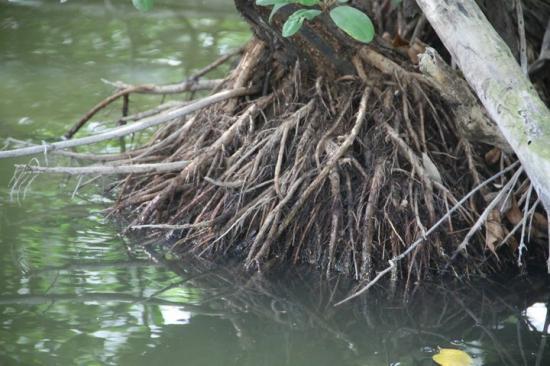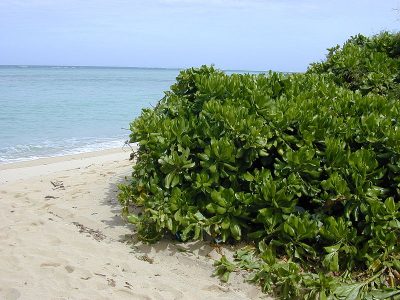TRUST THE LOCAL FLORA

Several charitable initiatives are aimed at re-vegetating the island after the devastation caused by hurricane Irma and can only be applauded. But in the longer term, a good initiative can cause significant disturbances to the biodiversity.
Members of our scientific council, Professor Claude Sastre, Honorary Professor at the National Museum of Natural History (France) who coordinated the inventory of the native Flora of St-Barthélemy and Dr. Léonide Celini, entomologist, former professor of University Paris Est-Creteil and coordinator of the inventory of ants and termites of St-Barthélemy, explain below why we must be careful when introducing new species and what should be done to help nature to resume its rights.
“After cyclones, we have already had the opportunity to see that the massive importation of plants was often followed by the appearance of invasive species that later became a plague for biodiversity.
Thus in plants, the introduction of Scaevola taccada (Gaertn.) Roxb. to fix the sand of Saint-Barthélemy’s beaches, proved positive at first. But after a time, this Goodeniaceae originally from the shores of the Indian Ocean called in Reunion “green velvet” quickly took the ascendancy on Scaevola plumieri, the local seaside’s cherry which does not exist any more in Saint-Barthélemy.


It is also not uncommon for introduced exogenous plants to harbor animals whose presence is not really desired.
This is the case of the Cuban tree frog (Osteopilus septentrionalis). After the hurricanes Luis and Marylin in 1999, the large hotels and garden centers of Saint-Barthélemy introduced ornamental palms to re-vegetate the island as quickly as possible. This has led to the introduction of this invasive frog which by its voracity represents a very important danger for chicks, insects, reptiles and other frogs. In two years, she invaded the whole island.
More recently, in 2011, the Fungus-growing ant, Acromyrmex octospinosus (photo below), an invasive species that damages ornamental, fruit and vegetable crops, was observed shortly after the transplantation of a tree called ‘Bois d’inde’, Pimenta racemosa, from Guadeloupe. This ant has been classified by IUCN as the most dangerous invasive species for the flora biodiversity of Guadeloupe.

It would be wise today to learn from the past to avoid making the same mistakes”.
TRUST THE LOCAL FLORA
This is not the first time the Caribbean has suffered a devastating hurricane, yet the vegetation is still there.
Why is she still here ? because she’s particularly well adapted to environmental conditions.
How long to see the island again green ? it is a fairly long-lasting but effective affair, unlike imported plants that often do not do well with the climatic hazards of Saint-Barthélemy, whose Lent requires watering … in an island known for its rather dry tropical climate.
In addition, it is quickly possible to observe the relentless work of nature: in a few days, one could see that plants emitted rejections. Ditto, in the location of mature trees, it is not uncommon to observe seedlings. Note that these can be recovered to be planted in a nursery.
If we have to trust the local flora to re-vegetate the island, it is not forbidden to give it a little help. To do so:
- Collect fallen trees rather than taking them to the dump for burning.
- As far as possible, favor the crushing of plants, rather than burning because plant residues are a source of fertilizer for soils.
- Ensure that the environment is stabilized, able to receive new plantations. For example: the mangrove, in particular that of Grand Cul de Sac, did it play its buffer role?
- Incorporate water retainers into the soil, which allows water and nutrients to be “stored”, thus guaranteeing a saving in watering. Very useful, especially during Lent.
- Prevent the introduction of invasive species or reduce them to the maximum. In most cases, once an invasive species is introduced, it can not be eradicated. One can simply, in the best of cases, contain its expansion.
- Sanction the non-compliance with the legislations on air and maritime transport and on endangering human, animal, plant and microbial life.